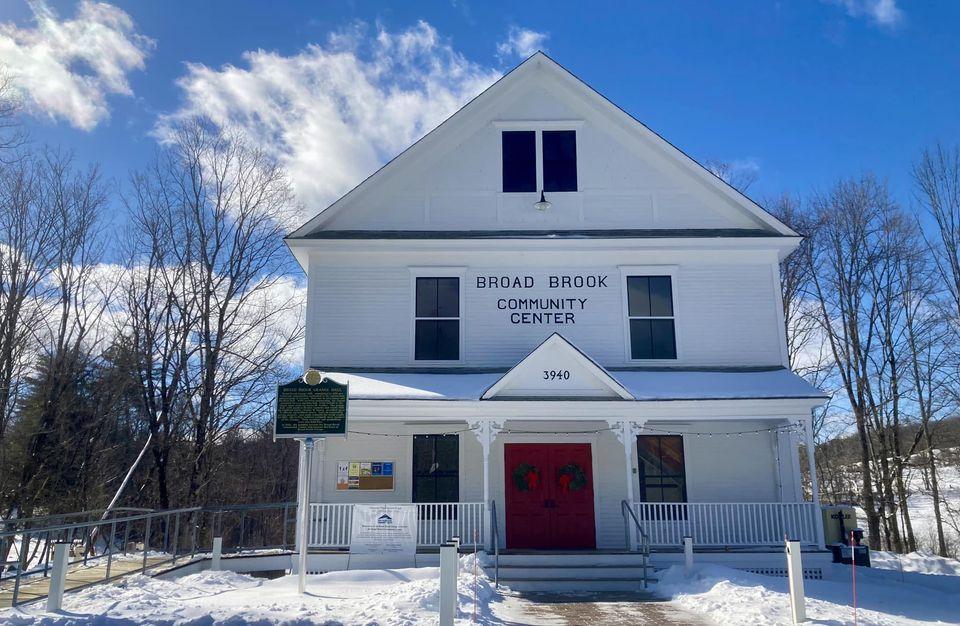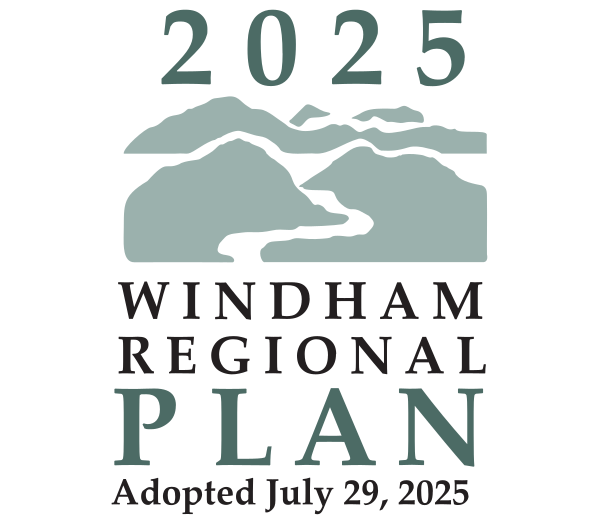Educational, Cultural, and Recreational Resources
Cultural and Historic Resources
Arts
The Windham Region is home to nationally recognized musicians, artists, writers and craftspeople. The presence of the arts community enriches the lives of residents and visitors, helps define the region, and adds to the local quality of life. The strength of the region’s cultural resources also has a direct link to the well-being of our economy through spending by arts organizations and by audiences attending events. As noted in the Economic Development Chapter, the arts and cultural sector adds approximately $1.1 billion to Vermont’s GDP, ranking it third in the state only behind retail and construction.
The Windham Region hosts many concerts, festivals, and performances. Summer concerts are held by the Yellow Barn in Putney, Friends of Music at Guilford, and Marlboro Music. The Brattleboro Music Center also hosts a series of choral, symphonic, and chamber works. Mount Snow and Stratton resorts also sponsor summer musical festivals. The Weston Theater Company is well known for their summer theater productions, but was significantly impacted by flooding in July 2023 and is working on reopening the Playhouse.
Several other theater companies, such as the New England Youth Theater and Sandglass Theater, offer workshops and perform in the region. The Brattleboro Museum and Art Center offers exhibits of work in a variety of media, often coupled with lectures or performances. Bellows Falls and Brattleboro have instituted popular monthly events in their downtowns with open art galleries and other community activities, known as Gallery Walk in Brattleboro and 3rd Friday in Bellows Falls. Finally, many artists region-wide also hold open studio events.
.jpg)
Photo Credit: Town of Dover Facebook Page
Dover Summer Concert Series
The Town of Dover hosts an annual Summer Concert Series at the Dover Park in West Dover. These events are funded entirely from the Local Option Meals and Rooms Tax the Town collects. Concerts are offered on Sunday afternoons and Wednesday evenings throughout the summer months.
The Stone Church in Brattleboro, Next Stage in Putney, Latchis Theater in Brattleboro, Opera House in Bellows Falls, and Memorial Hall in Wilmington are all exceptional historic facilities that have undergone restoration and have been developed as performing art centers. There are several other small performance venues through the region including the Hooker Dunham Theater in Brattleboro and the Windham Hotel in Bellows Falls.
Craftspeople form a significant segment of the region's culture and economy, and play a major role in the heritage tourism that continues to grow in the region. A number of art and craft festivals are held annually that help support local artisans. The region also sustains professional storytellers, mimes, puppeteers, traditional and folk musicians, and folk, contra and Morris dancers. The Arts Council of Windham County is a volunteer organization that works to foster an inclusive, connected, and dynamic creative community in Windham County. The Arts Council provides targeted resources, services, and connections to help growth and strengthen the local arts community. One example of their work is the Brattleboro Arts Fund that received funding from the Town of Brattleboro and offers small grants for individuals and organizations for creative projects that contribute to the greater Brattleboro community.
Historic Resources

Guildford Center
Historic structures and sites are an integral part of the Windham Region’s character and quality of life. They serve as a link to the past and through preservation and rehab efforts can help strengthen the local economy by promoting investment in other properties and tourism. It is in the public interest to preserve and enhance these historic resources. One way this is done is through support of local historic societies in the region, and collaborating with these societies on town projects when it is appropriate. There is also an opportunity to take advantage of the adaptive reuse of historic structures to put them back into productive use and reduce the need for new construction.
There are several examples of towns that have invested in rehabilitating historic structures within village centers to host community functions, meetings, and events. One example of this is the Broad Brook Community Center in Guilford Center, which was a Grange Hall and now is used for community events, concerts, classes, and meetings. There are a variety of preservation tools are available at the local, state and federal level. The following are just a sampling of tools available to towns in Vermont:
National Register of Historic Places
The National Register of Historic Places is the official list of the nation's resources worthy of preservation. Resources may be nominated individually, or in groups, as districts or as multiple resource areas and must generally be older than 50 years. Over 100 of the region’s historic structures and districts are listed on the National Register of Historic Places. Inclusion on the National Register affords the property special recognition of its contribution to local resources, provides a review of effects which any federally funded project may have on the property (most notably highway projects), and may enable property owners to receive federal tax advantages for historically appropriate improvements. These tax advantages are critical for supporting the costly improvements to bring historic structures up to current codes.
Vermont State Register of Historic Places
Sites listed on the State Register of Historic Places are given due consideration during Act 250 reviews. During the permit process, the Vermont Division of Historic Preservation will make recommendations to the District Environmental Commission on the impact to the historic resource. In addition to the sites listed on the National Register, there are numerous other sites and structures are recognized in the State Register.
Vermont Designated Downtown and Village Center Program
This program is managed by the State Agency of Commerce and Community Development and seeks to recognize and protect the cultural and economic investments in villages and downtowns by offering technical assistance and tax credits. Currently, there are three designated downtowns (Brattleboro, Bellows Falls and Wilmington) and 27 designated village centers in the Windham Region.
Local Historic Districts
Vermont State law (24 V.S.A. § 4414) allows towns to create and administer a local historic district (see the Historic District Map). The purpose of a historic district is to protect and preserve areas of outstanding architectural and historic value from inappropriate alterations and additions which might otherwise detract from the character. Towns may also designate historic landmarks and enact Design Review Districts. Wilmington is an example of a town that has adopted a Design Review District for its historic downtown area.
Preservation Trust of Vermont
The Preservation Trust of Vermont is a charitable, non-profit organization that initiates and assists local and statewide efforts to preserve Vermont’s historic, architectural, and community resources. Through educational programs and technical and financial assistance, the Preservation Trust works to protect and restore significant historic properties, downtowns and community centers.
Certified Local Government (CLG) Program
The CLG Program is a federally funded program administered by the state. A local government can participate in the program once the Vermont Division for Historic Preservation certifies the municipality. Matching grants are made each year to CLGs for survey and planning projects, including National Register nominations and education and advocacy projects. Rockingham is the only CLG in the Windham Region.
